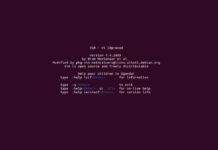In an summit held in San Francisco, Amazon announced the launch of new Storage service called Amazon Elastic File System (EFS) which provides a common file system for multiple EC2 servers. EFS is seeing by the AWS users community as an efficient way to utilize the feature of NFS (Network File Storage) on Amazon Web Services Stack
EFS Features
- Fully managed file system for ec2 instances
- Shareable across multiple EC2 instances
- Provide standard file system semantics
- Highly available and durable
- Work with standard operating system APIS
- Delivers performance for wide variety of workloads
- Elastic File System files are stored across multiple Availability Zones within a region.
- Amazon EFS can be integrated with AWS Identity and Access Management (IAM)
- Low Cost
Technical Specification
- Amazon EFS is SSD-based and is designed to provide the throughput, IOPS, and low latency needed for a broad range of workloads.
- Elastically can go to several petabytes
- Amazon EFS supports the Network File System version 4 (NFSv4) protocol, so the applications and tools you use today work seamlessly with EFS
- Administration via API, Console or Command Line
- Amazon VPC security groups and network access control lists allow you to manage network access to your Amazon EFS file systems.
- At the file and directory level, Amazon EFS supports user and group read/write/execute permissions.
- IAM policies can be used to control access to the Amazon EFS APIs as well as manage resource-level permissions for your file systems.
- Amazon EFS is integrated with AWS Cloud Trail, a web service that records AWS API calls for your account and delivers log files to you.
- Each Amazon EFS file system object (i.e. directory, file, and link) is redundantly stored across multiple Availability Zones. This helps protect your data and allows your EC2 instances to access your data from multiple AZs.
How to access a file system from an instance
- Create the file system from Console or CLI.
- Create a mount target in each AZ from which you want to access the file system
- Install and configure NFS client on your instance
- Mount the file system on an ec2 instance with standard mount command.
Mount –t nfs4 [file system DNS name]:/ /mount directory
- The file system will appear like a local set of directories and files.
Supported Regions
Pricing
With Amazon EFS, you pay only for the amount of file system storage you use in GB. There is no minimum fee and no set-up costs.
- $0.30/GB-month
Pricing Example
The storage amount billed in a month is based on the average storage space used throughout the month. Your storage usage is measured in “GB-Months,” which are added up at the end of the month to generate your monthly charges.
For example, assume your file system uses 100GB of storage for 15 days in March, and 250GB of storage for the final 16 days in March.
At the end of March, you would have the following usage in Byte-Hours:
Total usage (GB-hours) = [100 GB x 15 days x (24 hours / day)] + [250 GB x 16 days x (24 hours / day)]
= 132,000 GB-Hours
Convert this to GB-Months:
Total usage (GB-Months) = 132,00++s x (1 Month/744 hours)
= 177 GB-Months
The total monthly storage charge is calculated below
Total Monthly Storage Charge = 177 GB-Months x $0.30 = $53.10
Use Case
Amazon EFS is designed for a wide variety of use cases like content repositories, development environments, and home directories.
With on-demand scaling and performance, Amazon EFS is an ideal solution for Big Data applications.


















































